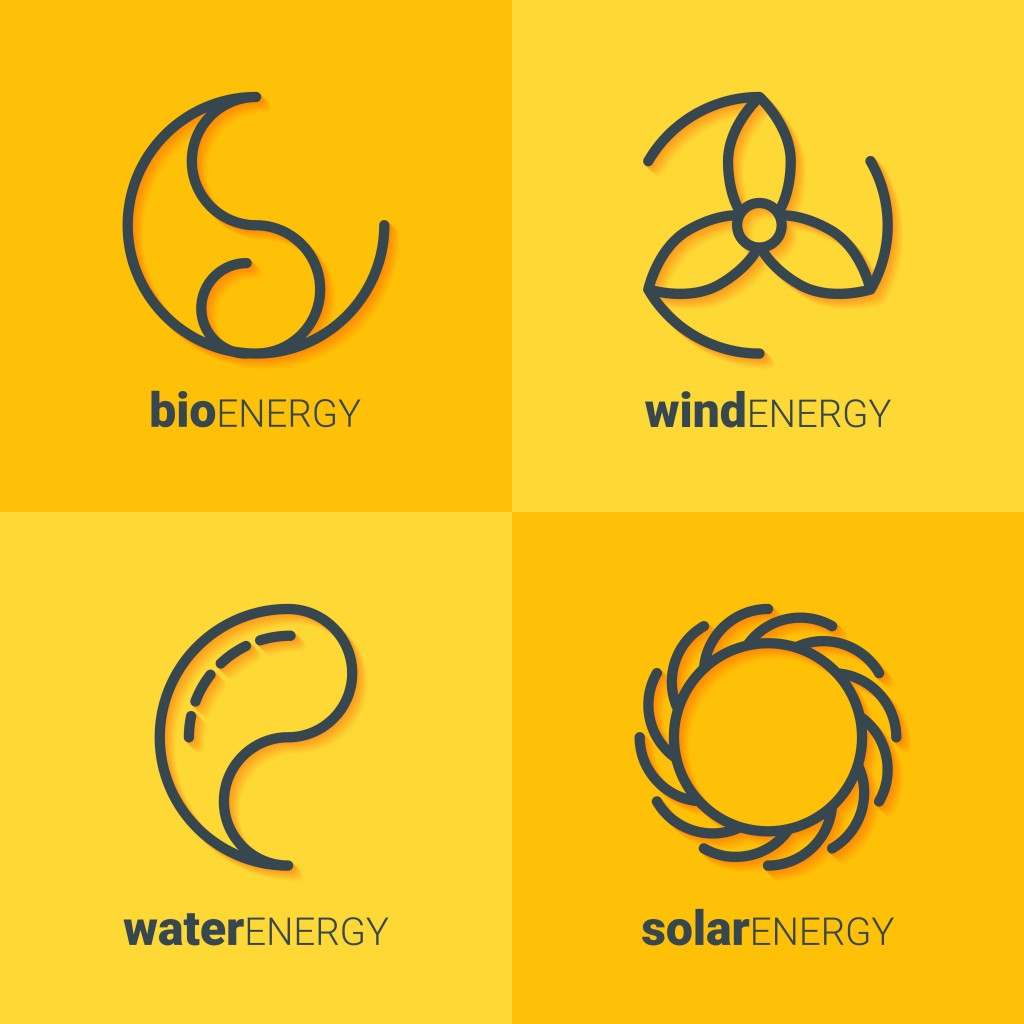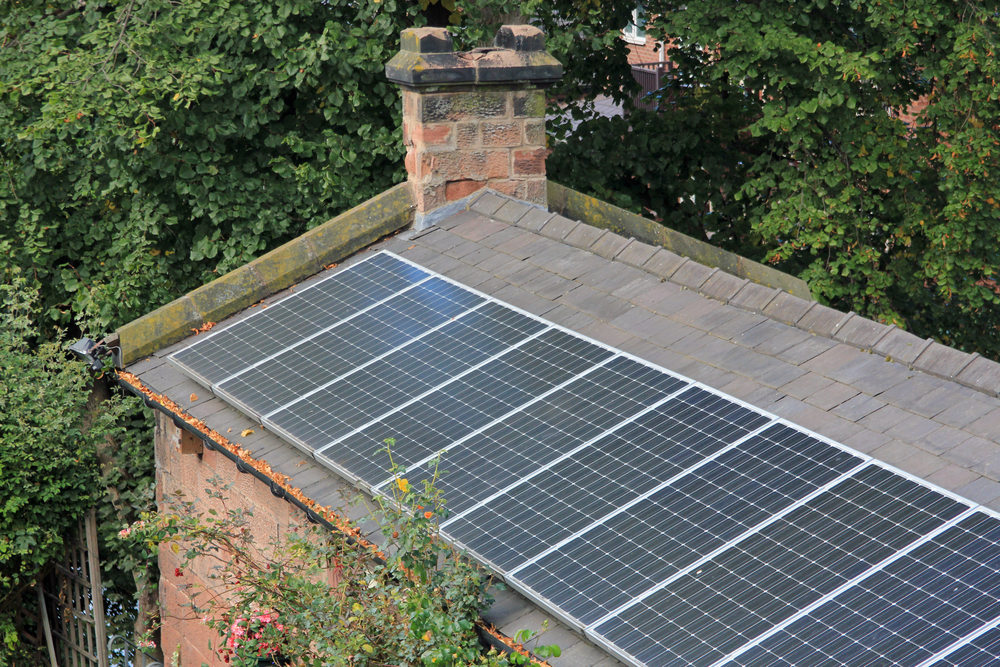The OGM Interactive Edition - Summer 2023 - Read Now!
View Past IssuesEnergy makes the world move and every bit of energy we consume comes from the Earth in one way or another. Coal and natural gas are called “fossil fuels” because they were formed deep under the Earth during the fossil times – the dinosaur era.
Fossil fuels are non-renewable, meaning we use them up and they can’t be replenished. With the populations increasing and energy demand increasing it would be inevitable that fossil fuels would run out if we didn’t find new and better ways. As well fossil fuels cause environmental damage and we have better ways available.
Renewable energy is made from resources that are given to us by nature and the earth itself. Some of the renewable energy sources we have already discovered include; hydro, wind, water/tidal, solar, biofuels, fusion, and there are more.
Renewable energy is environmentally friendly and it is known as “clean energy” or “green power” because it doesn’t pollute the world we live in. Renewable energy can be sourced from the Earth in many ways including the sun, the wind, the rain, tides, running rivers, and below the Earth. Current renewable sources of energy include: solar, wind, geothermal, biofuels, and hydroelectric.
Why don’t we use renewable energy all the time? Unlike natural gas and coal, we can’t store up the wind and the sunshine to use whenever we need to make more electricity. If the wind doesn’t blow or the sun hides behind clouds, there wouldn’t be enough power generated to ensure a constant flow of energy. We then need an external source to store energy when it’s not been used and to kick in when there’s no wind or sun producing energy. When we rely on energy supply to provide electricity, consistency is essential. So a non-stop energy supply is needed to keep the lights on all time, or to heat your home in the middle of winter.
Currently, fossil fuels like coal and natural gas are more readily available to infrastructure and suppliers and advances in technology. Oil is more abundant than ever. Therefore, it’s currently cheaper than most renewables to produce and supply – but this is changing.
It’s been said that renewable energy will be the future of energy as it’s cleaner, sustainable and it never runs out. So the question remains, how do we make the leap from non-renewables to renewables?
The greatest thing we could possibly do to create a sustainable new energy future is to use our non-renewables to bridge us to a renewable-energy-world. Harnessing commodities like oil, gas and coal and using them for the direct purpose of building renewable solutions will be the key to the future.

A renewable energy mix
What’s the difference between on-grid and off-grid?
On-grid means accessing electricity from a local, readily available public utility company in your area. In Canada, most often these utility companies convert oil, gas, hydro and other readily available resources into electricity and provide it to the public for a cost. In the case of Newfoundland, that supplier would be Newfoundland Power. This power comes from Hydropower and is converted into electricity.
Off-grid electrification is a perfect solution for regions where there is little or no access to electricity. So the term off-the-grid (OTG) refers to living in a self-sufficient manner without reliance on public utilities at all. Off-grid living is becoming more and more attractive to Canadians because of the expanse of the country, and so many people are living in remote locations. Having alternate energy options is an attractive and viable option for many.
Off-the-grid homes are stand-alone units. They do not rely on municipal water supply, sewer, natural gas, electrical power grid, or similar other utilities to support them. A true off-grid house is able to operate completely independently of all traditional public utility services.
The idea of off-grid living is becoming more and more popular. Renewable energy enthusiasts are creating their own solutions and waving the renewable energy flag. Celebrity Ed Begley, Jr, who stars in the Living with Ed television show on the Home & Garden Television (HGTV) network as well as actress Daryl Hannah, promotes off-grid living as a way of life. Survival expert and Dual Survival co-star Cody Lundin, lives in a self-designed, passive solar earth house in the wilderness of Northern Arizona, collecting rainwater, composting waste, and paying nothing for utilities. Beyond celebrity appeal, functional and effective off-grid systems are often used in smaller remote towns, for distant populations or for a remote country or cabin living.
The new energy mix
Today we are in very interesting times. We are about halfway between the non-renewable and renewable energy world. We are utilizing combinations of both to meet demands in what is known as an “energy mix” of solutions. You may see an oil rig running primarily on oil and gas but also have solar panels providing solar energy in many places throughout the rig. You may also have a solar panelled home, with wind turbines and also be tied into the available “grid”, meaning the electric company that provided electricity in your region. This is an energy mix of solutions that all contribute to the consumption of energy in various ways.
More and more we are seeing combinations of wind and solar to gain energy access. This is a hybrid approach that can satisfy many homes and industries. The hybrid power system combines the solar power generated by a photovoltaic energy storing system. Hybrid systems are capable of producing power whenever it is needed. Many hybrid systems are the stand-alone systems that operate as an “off grid” solution. Excess energy is stored in batteries which can be used later.
According to Natural Resources Canada:
• Canada, with its large landmass and diversified geography, has substantial renewable resources that can be used to produce energy; these resources include moving water, the wind, biomass, solar, geothermal, and ocean energy.
• Canada is a world leader in the production and use of energy from renewable resources. Renewable energy sources currently provide about 16.9% of Canada’s total primary energy supply.
• Moving water is the most important renewable energy source in Canada, providing 59% of Canada’s electricity generation. In fact, Canada is the third largest producer of hydroelectricity in the world.
• The wind is the second most important renewable energy source in Canada. It accounts for 1.6% of electricity generation in Canada.
• Biomass is the third largest source of Canada’s electricity generation. Its share in Canada’s electricity generation is 1.4%.
• The Wind and solar photovoltaic energy are the fastest growing sources of electricity in Canada.

Solar powered roof panels
Entrepreneurial insight for solar and wind
Ahead of his time, renewable-energy-veteran Dan Moody has been operating a solar and wind energy company in the province of Newfoundland and Labrador since 1995. Long before renewables were considered a viable option, Dan Moody was already doing it.
Taking a leap of faith from the oil and gas industry, Dan created his own new energy solutions that have supported on and off-grid needs in the province for two decades. His wealth of experience is unprecedented.
Dan Moody says, “Assessing energy needs is not as easy as saying, lets put some solar panels on the roof and that’s it. It doesn’t work that way. Energy has to be looked holistically. First and foremost you have to look at your home and ensure it’s energy efficient. Is it properly insulated for example? Have you converted to LED lighting? Have you ensured you have mitigated heat loss through windows and doors? Once your home is efficient and insulated other solutions can be considered. Is your home able to tie back into the Newfoundland power system or is it remote and requires other solutions? Our goal as a company is to become energy consultants, we review the overall big picture of a home, or location for a company and then we make recommendations based on the best overall and sustainable approach. No one solution fits all. Every scenario is different. People need to be educated about options and which options will be most viable in the long term.”
Dan Moody’s company, SW Energy operates out of Clarenville, Newfoundland yet it services clients island wide. SW stands for solar and wind and these are the primary renewable solutions of the company. SW Energy has successfully worked on numerous commercial, residential, mobile, industrial and marine projects.
Offering “off grid” and “on grid” connected imagery systems, SW Energy offers solar and wind solutions in the following ways:
The demand for solar and wind systems in the remote locations of Canada is on the rise. It is not just the renewable energy benefits that homeowners and business are attracted, it’s also that they are becoming more financially cost efficient. Installation costs of solar panels have decreased dramatically and technological innovation and new solutions are advancing rapidly, bringing the entire renewable energy industry to a new level.
According to United Technologies, a company concerned with the impact of Green Buildings on Cognitive Performance, a study they dis, showed some interesting results. Given that we spend most of our time indoors, United Technologies study found that there was a doubling of cognitive scores for with people in enhanced green building environments. Specifically, recipients of the studies showed an over 50% increase in performance in the key areas of strategy, information usage and crisis response in green buildings. Once again another case supporting sustainable energy and green and clean environments.

The United Nations offers a sustainable plan for energy
In 2015, the United Nations made the proclamation of 17 goals for a sustainable world. Joining the ranks of ending hunger, education for all, and food supply, number 7 on the list of priorities was sustainable energy. The United Nations goal is to “Ensure access to affordable, reliable and sustainable energy for all.” This is a powerful declaration and it means that both the developed and developing parts of the world will be faced with big challenges and major decisions about how to best provide sustainable energy in a way that meets global demand. What it means for wind and solar is yet to be seen but we can certainly speculate about the potential and the possibilities ahead.
Publisher & Content Strategist

Tina Olivero is a creative, 25-year veteran of the energy business. She is an innovative, tech-savvy, entrepreneur that focuses on elevating companies, communities and people. She spends her time architecting new business ideas, elevating others, coaching and also has a lot of fun as an international speaker. Her abilities are grounded in a holistic approach that assists clients in overcoming the challenges of the day!
TALK TO TINA
Do you want to discuss the new energy mix?
Do you want to discuss how your company can be successful in this digitally advanced era?
Are you are looking to position your company for sales and growth?
If so, please feel free to book a free 15-minute consult with Tina Olivero, by contacting tinaolivero@theogm.com
Did you enjoy this article?